- Geometric Model Finder context
- Controlled geometric Model Finder context
- Circle shape Model Finder context
- Elliptical shape Model Finder context
- Rectangular shape Model Finder context
- Segment shaped Model Finder context
 Availability
Availability
 Function map
Function map | MIL_ID ContextId, | //in |
| MIL_INT64 ModelType, | //in |
| MIL_DOUBLE Param1, | //in |
| MIL_DOUBLE Param2, | //in |
| MIL_DOUBLE Param3, | //in |
| MIL_DOUBLE Param4, | //in |
| MIL_DOUBLE Param5 | //in |
This function allows you to add a model to, or delete a model from, a Model Finder context. To an M_GEOMETRIC or M_GEOMETRIC_CONTROLLED type of Model Finder context, you can add a model from an image, from a result buffer, from two other models, or you can add a synthetic model. Image-type, result-type, merge-type, and synthetic models can be mixed in the same Model Finder context. To an M_SHAPE_... type of Model Finder context, you can only add a single synthetic model of the same type (for example, to an M_SHAPE_CIRCLE type of context, you can only add a single synthetic M_CIRCLE model).
There are two types of image-type models: models for which you manually define their location in the model source image (M_IMAGE), and models that MIL automatically defines from the model source image (M_AUTO_DEFINE). M_AUTO_DEFINE defines a unique model by searching the model source image for unique geometric features. MmodDefine() can define an automatic model based on default settings. To have specified settings taken into account during model definition, you must allocate an empty image-type model using M_AUTO_DEFINE, set the appropriate control types using MmodControl(), and then call MmodControl() with M_AUTO_DEFINE. It can take several seconds to find the best model (or more for large or small images). To be useful, the model source image should be a typical target image; otherwise, the selected area for the model might never be present in the target image. For more information on defining a model automatically, see the Image-type models subsection of the Defining and adding models to your Model Finder context section of Chapter 8: Geometric Model Finder.
There are two types of result-type models: models defined from an Edge Finder result buffer (Edge Finder-type models), and models defined from a Model Finder result buffer (Model Finder-type model).
Merge-type models are composed of the edges of two different models. When you define a merge-type model, the two models from which it is merged are not affected.
There are two types of synthetic models: models of a predefined shape (predefined-shape models) and models defined from a CAD DXF file (CAD-file models). Use MmodDefineFromFile() to define a CAD-file model.
By default, synthetic models are defined to have a 10% margin around the bounding box of their active edges. For a model in an M_SHAPE_... type of Model Finder context, this margin is used for drawing. For a model in an M_GEOMETRIC or M_GEOMETRIC_CONTROLLED context, any extra edges found in this area, when finding an occurrence, will reduce the target score. Regardless of the context, you can change the size of the margins with the MmodControl() M_BOX_MARGIN_... control types.
How you specify the dimensions of synthetic models depends on the type of context:
For an M_GEOMETRIC or M_GEOMETRIC_CONTROLLED type of Model Finder context, specify the dimensions of synthetic models in user-defined units. Then, specify the ratio between model units and pixel units using MmodControl() with M_PIXEL_SCALE. If the target is not calibrated, then M_PIXEL_SCALE is used for the match. If the target is calibrated, the model units should be the same as the calibrated units. If the target is calibrated, M_PIXEL_SCALE will be used for draw operations, but not for the match nor the returned results. If you are searching for a synthetic model in a calibrated target, you must also associate the camera calibration context of the target with the model, using M_ASSOCIATED_CALIBRATION. MIL needs the camera calibration context for internal purposes at preprocessing time. MIL will not use the camera calibration context to compensate for incongruencies between the model and the target, nor will MIL map the model's coordinate system to that of the target.
After you have specified your pixel scale and scale settings, you can verify if your synthetic models are valid, using MmodInquire() with M_VALID. Synthetic models can be invalid if their global size in X or Y (size of the model box * M_PIXEL_SCALE * M_SCALE) is greater than 1024.
For an M_SHAPE_... type of Model Finder context, specify the dimensions of the synthetic models in the units of the target; M_PIXEL_SCALE and M_ASSOCIATED_CALIBRATION are not used.
If the image or the result buffer used to define the model is calibrated, then that camera calibration context is automatically associated with the model. Models can use different camera calibration contexts within the same Model Finder context, provided all camera calibrations map to the same world. All image-type or result-type models must be either calibrated or not.
When a call to MmodFind() is made, all models that are part of the specified context are searched for simultaneously in the target.
Note, when a model is added or deleted, the Model Finder context must be preprocessed again, using MmodPreprocess().
The search is performed according to the general search settings specified in the Model Finder context (M_CONTEXT), as well as the individual model search settings. Both the context and individual model search settings can be specified using MmodControl().
The model index starts at 0, and each subsequent model added to the Model Finder context is given a sequential index number, in the order that the model was added. If a model is deleted, all entries with higher indices are shifted down one.
For more information on defining models, see the Guidelines for choosing models section of Chapter 8: Geometric Model Finder.
Specifies the Model Finder context to which to add, or from which to delete, the model. The Model Finder context must have been previously allocated on the required system using MmodAlloc().
Specifies the type of model to define when adding models to the context, or specifies to delete a model from the Model Finder context.
See the Parameter associations section for possible values that can be specified.
Specifies an attribute of the model to add. Its definition is dependent on the model type chosen.
See the Parameter associations section for possible values that can be specified.
Specifies an attribute of the model to add. Its definition is dependent on the model type chosen.
Set this parameter to M_DEFAULT if not used.
See the Parameter associations section for possible values that can be specified.
Specifies an attribute of the model to add. Its definition is dependent on the model type chosen.
Set this parameter to M_DEFAULT if not used.
See the Parameter associations section for possible values that can be specified.
Specifies an attribute of the model to add. Its definition is dependent on the model type chosen.
Set this parameter to M_DEFAULT if not used.
See the Parameter associations section for possible values that can be specified.
Specifies an attribute of the model to add. Its definition is dependent on the model type chosen.
Set this parameter to M_DEFAULT if not used.
See the Parameter associations section for possible values that can be specified.
The tables below list possible values for the ModelType, Param1, Param2, Param3, Param4, and Param5 parameters.
To add a model to the context, the ModelType, Param1, Param2, Param3, Param4, and Param5 parameters can be set to the following values. Note that any unused parameters should be set to M_DEFAULT.
 For adding a model to the context For adding a model to the context
|
|||||||||||||||||||||||||||||||||||||||
|
|
Description | ||||||||||||||||||||||||||||||||||||||
| Param1 | |||||||||||||||||||||||||||||||||||||||
| Param2 | |||||||||||||||||||||||||||||||||||||||
| Param3 | |||||||||||||||||||||||||||||||||||||||
| Param4 | |||||||||||||||||||||||||||||||||||||||
| Param5 | |||||||||||||||||||||||||||||||||||||||
|
Defines a unique model whose features are extracted from an automatically selected region of the model source image. To define a model automatically based on specified control settings, call this function with Param1 set to M_NULL. Then, specify control settings using MmodControl(). Once the controls are set, define the model using MmodControl() with M_AUTO_DEFINE. To define a model automatically based on default control settings, call this function with Param1 set to the identifier of the model source image. This type of model is not supported for M_SHAPE_... type of Model Finder contexts. (summarize)Defines a unique model whose features are extracted from an automatically selected region of the model source image. (more details...) |
|||||||||||||||||||||||||||||||||||||||
|
Sets the identifier of the image buffer or specifies to define an empty model. (summarize)Sets the identifier of the image buffer or specifies to define an empty model. (more details...) |
|||||||||||||||||||||||||||||||||||||||
|
Specifies that an empty model should be defined. |
|||||||||||||||||||||||||||||||||||||||
|
Sets the identifier of the image buffer (model source image) from which to extract a unique model. The image buffer must be a 1-band 8-bit unsigned buffer. This image buffer must not have a region of interest (ROI) associated with it. Using an image buffer with an ROI will cause an error. (summarize)Sets the identifier of the image buffer (model source image) from which to extract a unique model. (more details...) |
|||||||||||||||||||||||||||||||||||||||
|
Sets the maximum displacement (shift), in the horizontal direction, expected between the position of the model in the source image and the position of the model when found in the target image. This information is used to select a model that is far enough from the image borders to be present in the target images. (summarize)Sets the maximum displacement (shift), in the horizontal direction, expected between the position of the model in the source image and the position of the model when found in the target image. (more details...) |
|||||||||||||||||||||||||||||||||||||||
|
Selects a model from anywhere in the whole width of the image. |
|||||||||||||||||||||||||||||||||||||||
|
Specifies the maximum expected pixel displacement in the horizontal direction. |
|||||||||||||||||||||||||||||||||||||||
|
Sets the maximum displacement (shift), in the vertical direction, expected between the position of the model in the source image and the position of the model when found in the target image. This information is used to select a model that is far enough from the image borders to be present in the target images. (summarize)Sets the maximum displacement (shift), in the vertical direction, expected between the position of the model in the source image and the position of the model when found in the target image. (more details...) |
|||||||||||||||||||||||||||||||||||||||
|
Selects a model from anywhere in the whole height of the image. |
|||||||||||||||||||||||||||||||||||||||
|
Specifies the maximum expected pixel displacement in the verical direction. |
|||||||||||||||||||||||||||||||||||||||
|
Specifies a predefined circle as the model. 
This type of model is only supported for an M_SHAPE_CIRCLE, M_GEOMETRIC or M_GEOMETRIC_CONTROLLED type of Model Finder context. (summarize)Specifies a predefined circle as the model. (more details...) |
|||||||||||||||||||||||||||||||||||||||
|
Sets the foreground color of the circle. INQ (summarize)Sets the foreground color of the circle. INQ (more details...) |
|||||||||||||||||||||||||||||||||||||||
|
Specifies the default value. For an M_GEOMETRIC or M_GEOMETRIC_CONTROLLED type of Model Finder context, the default value is M_ANY. For an M_SHAPE_CIRCLE type of Model Finder context, the default value is M_FOREGROUND_BLACK. (summarize)Specifies the default value. (more details...) |
|||||||||||||||||||||||||||||||||||||||
|
Specifies that the model has no specific polarity. This setting is not supported for an M_SHAPE_CIRCLE type of Model Finder context. (summarize)Specifies that the model has no specific polarity. (more details...) |
|||||||||||||||||||||||||||||||||||||||
|
Specifies that black is the foreground color of the model. |
|||||||||||||||||||||||||||||||||||||||
|
Specifies that white is the foreground color of the model. |
|||||||||||||||||||||||||||||||||||||||
|
Sets the radius of the circle. INQ (summarize)Sets the radius of the circle. INQ (more details...) |
|||||||||||||||||||||||||||||||||||||||
|
Specifies a predefined cross as the model. 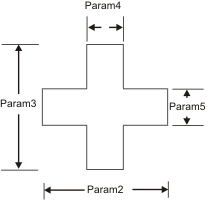
You can round the corners of this model using MmodControl() with M_CORNER_RADIUS. This type of model is not supported for M_SHAPE_... type of Model Finder contexts. (summarize)Specifies a predefined cross as the model. (more details...) |
|||||||||||||||||||||||||||||||||||||||
|
Sets the foreground color of the cross. INQ (summarize)Sets the foreground color of the cross. INQ (more details...) |
|||||||||||||||||||||||||||||||||||||||
|
Same as M_ANY. |
|||||||||||||||||||||||||||||||||||||||
|
Specifies that the model has no specific polarity. |
|||||||||||||||||||||||||||||||||||||||
|
Specifies that black is the foreground color of the model. |
|||||||||||||||||||||||||||||||||||||||
|
Specifies that white is the foreground color of the model. |
|||||||||||||||||||||||||||||||||||||||
|
Sets the width of the cross. INQ (summarize)Sets the width of the cross. INQ (more details...) |
|||||||||||||||||||||||||||||||||||||||
|
Sets the height of the cross. INQ (summarize)Sets the height of the cross. INQ (more details...) |
|||||||||||||||||||||||||||||||||||||||
|
Sets the horizontal thickness of the cross. INQ (summarize)Sets the horizontal thickness of the cross. INQ (more details...) |
|||||||||||||||||||||||||||||||||||||||
|
Sets the vertical thickness of the cross. INQ (summarize)Sets the vertical thickness of the cross. INQ (more details...) |
|||||||||||||||||||||||||||||||||||||||
|
Specifies a predefined diamond as the model. 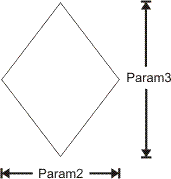
You can round the corners of this model using MmodControl() with M_CORNER_RADIUS. This type of model is not supported for M_SHAPE_... type of Model Finder contexts. (summarize)Specifies a predefined diamond as the model. (more details...) |
|||||||||||||||||||||||||||||||||||||||
|
Sets the foreground color of the diamond. INQ (summarize)Sets the foreground color of the diamond. INQ (more details...) |
|||||||||||||||||||||||||||||||||||||||
|
Same as M_ANY. |
|||||||||||||||||||||||||||||||||||||||
|
Specifies that the model has no specific polarity. |
|||||||||||||||||||||||||||||||||||||||
|
Specifies that black is the foreground color of the model. |
|||||||||||||||||||||||||||||||||||||||
|
Specifies that white is the foreground color of the model. |
|||||||||||||||||||||||||||||||||||||||
|
Sets the width of the diamond. INQ (summarize)Sets the width of the diamond. INQ (more details...) |
|||||||||||||||||||||||||||||||||||||||
|
Sets the height of the diamond. INQ (summarize)Sets the height of the diamond. INQ (more details...) |
|||||||||||||||||||||||||||||||||||||||
|
Defines a model from the results of an edge extraction performed using Edge Finder. To define a model from an Edge Finder result buffer, the buffer must have been previously allocated using MedgeAllocResult(). MedgeCalculate() must have been already called. In addition, the Edge Finder result buffer must be compatible with the Model Finder context. Enable compatibility using MedgeControl() with M_MODEL_FINDER_COMPATIBLE prior to calling MedgeCalculate(). The model is defined to have all currently included edges in the result buffer. In the case of an Edge Finder-type model, the model source image is the image from which the Edge Finder results were obtained. This type of model is not supported for M_SHAPE_... type of Model Finder contexts. (summarize)Defines a model from the results of an edge extraction performed using Edge Finder. (more details...) |
|||||||||||||||||||||||||||||||||||||||
|
Sets the identifier of the Edge Finder result buffer. The Edge Finder result buffer (Param1) must be allocated on the same system as the Model Finder context (ContextId). If it is not, an error will occur. (summarize)Sets the identifier of the Edge Finder result buffer. (more details...) |
|||||||||||||||||||||||||||||||||||||||
|
Sets the X-offset of the model origin from the model source image. (summarize)Sets the X-offset of the model origin from the model source image. (more details...) |
|||||||||||||||||||||||||||||||||||||||
|
Specifies that the X-offset of the model origin is the origin of the model source image. The X-offset is 0. (summarize)Specifies that the X-offset of the model origin is the origin of the model source image. (more details...) |
|||||||||||||||||||||||||||||||||||||||
|
Specifies the X-offset of the model origin in the model source image, in pixels. |
|||||||||||||||||||||||||||||||||||||||
|
Sets the Y-offset of the model origin from the model source image. (summarize)Sets the Y-offset of the model origin from the model source image. (more details...) |
|||||||||||||||||||||||||||||||||||||||
|
Specifies that the Y-offset of the model origin is the origin of the model source image. The Y-offset is 0. (summarize)Specifies that the Y-offset of the model origin is the origin of the model source image. (more details...) |
|||||||||||||||||||||||||||||||||||||||
|
Specifies the Y-offset of the model origin in the model source image, in pixels. |
|||||||||||||||||||||||||||||||||||||||
|
Sets the width of the model. (summarize)Sets the width of the model. (more details...) |
|||||||||||||||||||||||||||||||||||||||
|
Specifies that the width of the model is the width of the model source image. |
|||||||||||||||||||||||||||||||||||||||
|
Specifies the width of the model (in X), in pixels. |
|||||||||||||||||||||||||||||||||||||||
|
Sets the height of the model. (summarize)Sets the height of the model. (more details...) |
|||||||||||||||||||||||||||||||||||||||
|
Specifies that the height of the model is the height of the model source image. |
|||||||||||||||||||||||||||||||||||||||
|
Specifies the height of the model (in Y), in pixels. |
|||||||||||||||||||||||||||||||||||||||
|
Specifies a predefined ellipse as the model. 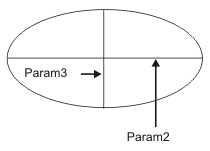
Note that when specifying this type of model using an M_SHAPE_ELLIPSE type of Model Finder context, the width of the model must be larger than or equal to the height. This type of model is only supported for an M_SHAPE_ELLIPSE, M_GEOMETRIC or M_GEOMETRIC_CONTROLLED type of Model Finder context. (summarize)Specifies a predefined ellipse as the model. (more details...) |
|||||||||||||||||||||||||||||||||||||||
|
Sets the foreground color of the ellipse. INQ (summarize)Sets the foreground color of the ellipse. INQ (more details...) |
|||||||||||||||||||||||||||||||||||||||
|
Specifies the default value. For an M_GEOMETRIC or M_GEOMETRIC_CONTROLLED type of Model Finder context, the default value is M_ANY. For an M_SHAPE_ELLIPSE type of Model Finder context, the default value is M_FOREGROUND_BLACK. (summarize)Specifies the default value. (more details...) |
|||||||||||||||||||||||||||||||||||||||
|
Specifies that the model has no specific polarity. This setting is not supported for an M_SHAPE_ELLIPSE type of Model Finder context. (summarize)Specifies that the model has no specific polarity. (more details...) |
|||||||||||||||||||||||||||||||||||||||
|
Specifies that black is the foreground color of the model. |
|||||||||||||||||||||||||||||||||||||||
|
Specifies that white is the foreground color of the model. |
|||||||||||||||||||||||||||||||||||||||
|
Sets the width of the ellipse. For an M_SHAPE_ELLIPSE type of Model finder context, the width must be greater or equal to the height. INQ (summarize)Sets the width of the ellipse. INQ (more details...) |
|||||||||||||||||||||||||||||||||||||||
|
Sets the height of the ellipse. INQ (summarize)Sets the height of the ellipse. INQ (more details...) |
|||||||||||||||||||||||||||||||||||||||
|
Defines a model from the specified model source image. The default settings use the entire image as the model. For image-type models, the minimum and maximum model sizes are 16.0 x 16.0 and 4096.0 x 4096.0 pixels, respectively. This type of model is not supported for M_SHAPE_... type of Model Finder contexts. (summarize)Defines a model from the specified model source image. (more details...) |
|||||||||||||||||||||||||||||||||||||||
|
Sets the identifier of the image buffer (model source image) from which to extract the model. The image buffer must be a 1-band 8-bit unsigned buffer. You can specify an image buffer (model source image) that is associated to an ROI that was set using a rotated rectangle in a 2D graphics list. To add a rotated rectangle to a 2D graphics list, you can call MgraRectAngle(); to set (associate) that rectangle as the ROI of an image buffer, you can call MbufSetRegion() with M_RASTERIZE or M_NO_RASTERIZE and M_FILL_REGION. If the region is a non-rectangular shape, you will get an error. When specifying an image buffer (model source image) that is associated to an ROI, you must set Param2, Param3, Param4, and Param5 to M_DEFAULT. (summarize)Sets the identifier of the image buffer (model source image) from which to extract the model. (more details...) |
|||||||||||||||||||||||||||||||||||||||
|
Sets the X-offset of the model origin from the model source image. INQ (summarize)Sets the X-offset of the model origin from the model source image. INQ (more details...) |
|||||||||||||||||||||||||||||||||||||||
|
Specifies that the X-offset of the model origin is the origin of the model source image. The X-offset is 0. (summarize)Specifies that the X-offset of the model origin is the origin of the model source image. (more details...) |
|||||||||||||||||||||||||||||||||||||||
|
Specifies the X-offset of the model origin in the source image, in pixels. |
|||||||||||||||||||||||||||||||||||||||
|
Sets the Y-offset of the model origin. INQ (summarize)Sets the Y-offset of the model origin. INQ (more details...) |
|||||||||||||||||||||||||||||||||||||||
|
Specifies that the Y-offset of the model origin is the origin of the model source image. The Y-offset is 0. (summarize)Specifies that the Y-offset of the model origin is the origin of the model source image. (more details...) |
|||||||||||||||||||||||||||||||||||||||
|
Specifies the Y-offset of the model origin in the source image, in pixels. |
|||||||||||||||||||||||||||||||||||||||
|
Sets the width of the model. INQ (summarize)Sets the width of the model. INQ (more details...) |
|||||||||||||||||||||||||||||||||||||||
|
Specifies that the width of the model is the distance from the origin of the model to the edge of the image in the X-direction. |
|||||||||||||||||||||||||||||||||||||||
|
Specifies the width of the model (in X), in pixels. |
|||||||||||||||||||||||||||||||||||||||
|
Sets the height of the model. INQ (summarize)Sets the height of the model. INQ (more details...) |
|||||||||||||||||||||||||||||||||||||||
|
Specifies that the height of the model is the distance from the origin of the model to the edge of the image in the Y-direction. |
|||||||||||||||||||||||||||||||||||||||
|
Specifies the height of the model (in Y), in pixels. |
|||||||||||||||||||||||||||||||||||||||
|
Defines a model from two other models. These models have to be in the same Model Finder context. The model is defined with the edges of the first model and the edges of the second model that are not equal to the edges of the first model. The size of the merge-type model is the size of the first model. To include all of the edges of both models in the new model, set the first parameter to the index of the larger model. If the models being merged are calibrated, the new merge-type model will be associated with the camera calibration context of the first model. This type of model is not supported for M_SHAPE_... type of Model Finder contexts. (summarize)Defines a model from two other models. (more details...) |
|||||||||||||||||||||||||||||||||||||||
|
Sets the index of the first model. User labels cannot be used as indices; to retrieve the index of a model from its user label, use MmodInquire() with M_INDEX_FROM_LABEL. (summarize)Sets the index of the first model. (more details...) |
|||||||||||||||||||||||||||||||||||||||
|
Sets the index of the second model. User labels cannot be used as indices; to retrieve the index of a model from its user label, use MmodInquire() with M_INDEX_FROM_LABEL. (summarize)Sets the index of the second model. (more details...) |
|||||||||||||||||||||||||||||||||||||||
|
Defines a model from a Model Finder result buffer. The model is defined with the edges of the target at the position of the specified occurrence. To define a model from a Model Finder result buffer, enable MmodControl() with M_MOD_DEFINE_COMPATIBLE. In the case of a Model Finder-type model, the model source image is the target from which the results were obtained. This type of model is not supported for M_SHAPE_... type of Model Finder contexts. (summarize)Defines a model from a Model Finder result buffer. (more details...) |
|||||||||||||||||||||||||||||||||||||||
|
Sets the identifier of the Model Finder result buffer. The Model Finder result buffer must be allocated on the same system as the Model Finder context (ContextId). If it is not, an error will occur. (summarize)Sets the identifier of the Model Finder result buffer. (more details...) |
|||||||||||||||||||||||||||||||||||||||
|
Sets the index of the occurrence. (summarize)Sets the index of the occurrence. (more details...) |
|||||||||||||||||||||||||||||||||||||||
|
Specifies a predefined rectangle as the model. 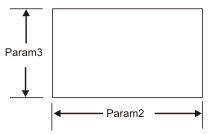
If adding the model to an M_GEOMETRIC or M_GEOMETRIC_CONTROLLED context, you can round the corners of this model using MmodControl() with M_CORNER_RADIUS. This type of model is only supported for an M_SHAPE_RECTANGLE, M_GEOMETRIC or M_GEOMETRIC_CONTROLLED type of Model Finder context. (summarize)Specifies a predefined rectangle as the model. (more details...) |
|||||||||||||||||||||||||||||||||||||||
|
Sets the foreground color of the rectangle. INQ (summarize)Sets the foreground color of the rectangle. INQ (more details...) |
|||||||||||||||||||||||||||||||||||||||
|
Specifies the default value. For an M_GEOMETRIC or M_GEOMETRIC_CONTROLLED type of Model Finder context, the default value is M_ANY. For an M_SHAPE_RECTANGLE type of Model Finder context, the default value is M_FOREGROUND_BLACK. (summarize)Specifies the default value. (more details...) |
|||||||||||||||||||||||||||||||||||||||
|
Specifies that the model has no specific polarity. This setting is not supported for an M_SHAPE_RECTANGLE type of Model Finder context. (summarize)Specifies that the model has no specific polarity. (more details...) |
|||||||||||||||||||||||||||||||||||||||
|
Specifies that black is the foreground color of the model. |
|||||||||||||||||||||||||||||||||||||||
|
Specifies that white is the foreground color of the model. |
|||||||||||||||||||||||||||||||||||||||
|
Sets the width of the rectangle. For an M_SHAPE_RECTANGLE type of Model finder context, the width must be greater or equal to the height. INQ (summarize)Sets the width of the rectangle. INQ (more details...) |
|||||||||||||||||||||||||||||||||||||||
|
Sets the height of the rectangle. INQ (summarize)Sets the height of the rectangle. INQ (more details...) |
|||||||||||||||||||||||||||||||||||||||
|
Specifies a predefined ring as the model. 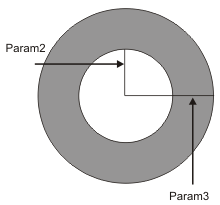
This type of model is not supported for M_SHAPE_... type of Model Finder contexts. (summarize)Specifies a predefined ring as the model. (more details...) |
|||||||||||||||||||||||||||||||||||||||
|
Sets the foreground color of the ring. INQ (summarize)Sets the foreground color of the ring. INQ (more details...) |
|||||||||||||||||||||||||||||||||||||||
|
Same as M_ANY. |
|||||||||||||||||||||||||||||||||||||||
|
Specifies that the model has no specific polarity. |
|||||||||||||||||||||||||||||||||||||||
|
Specifies that black is the foreground color of the model. |
|||||||||||||||||||||||||||||||||||||||
|
Specifies that white is the foreground color of the model. |
|||||||||||||||||||||||||||||||||||||||
|
Sets the radius of the inner ring. INQ (summarize)Sets the radius of the inner ring. INQ (more details...) |
|||||||||||||||||||||||||||||||||||||||
|
Sets the radius of the outer ring. INQ (summarize)Sets the radius of the outer ring. INQ (more details...) |
|||||||||||||||||||||||||||||||||||||||
|
Specifies a predefined segment as the model. 
This type of model is only supported for an M_SHAPE_SEGMENT type of Model Finder context. (summarize)Specifies a predefined segment as the model. (more details...) |
|||||||||||||||||||||||||||||||||||||||
|
Sets the length of the segment. INQ (summarize)Sets the length of the segment. INQ (more details...) |
|||||||||||||||||||||||||||||||||||||||
|
Specifies a predefined square as the model. 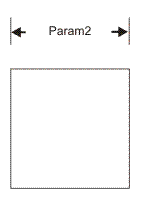
You can round the corners of this model using MmodControl() with M_CORNER_RADIUS. This type of model is not supported for M_SHAPE_... type of Model Finder contexts. (summarize)Specifies a predefined square as the model. (more details...) |
|||||||||||||||||||||||||||||||||||||||
|
Sets the foreground color of the square. INQ (summarize)Sets the foreground color of the square. INQ (more details...) |
|||||||||||||||||||||||||||||||||||||||
|
Same as M_ANY. |
|||||||||||||||||||||||||||||||||||||||
|
Specifies that the model has no specific polarity. |
|||||||||||||||||||||||||||||||||||||||
|
Specifies that black is the foreground color of the model. |
|||||||||||||||||||||||||||||||||||||||
|
Specifies that white is the foreground color of the model. |
|||||||||||||||||||||||||||||||||||||||
|
Sets the width and height of the square. INQ (summarize)Sets the width and height of the square. INQ (more details...) |
|||||||||||||||||||||||||||||||||||||||
|
Specifies a predefined triangle as the model. 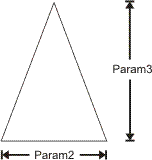
You can round the corners of this model using MmodControl() with M_CORNER_RADIUS. This type of model is not supported for M_SHAPE_... type of Model Finder contexts. (summarize)Specifies a predefined triangle as the model. (more details...) |
|||||||||||||||||||||||||||||||||||||||
|
Sets the foreground color of the triangle. INQ (summarize)Sets the foreground color of the triangle. INQ (more details...) |
|||||||||||||||||||||||||||||||||||||||
|
Same as M_ANY. |
|||||||||||||||||||||||||||||||||||||||
|
Specifies that the model has no specific polarity. |
|||||||||||||||||||||||||||||||||||||||
|
Specifies that black is the foreground color of the model. |
|||||||||||||||||||||||||||||||||||||||
|
Specifies that white is the foreground color of the model. |
|||||||||||||||||||||||||||||||||||||||
|
Sets the width of the triangle. INQ (summarize)Sets the width of the triangle. INQ (more details...) |
|||||||||||||||||||||||||||||||||||||||
|
Sets the height of the triangle. INQ (summarize)Sets the height of the triangle. INQ (more details...) |
|||||||||||||||||||||||||||||||||||||||
The following ModelType parameter setting can be used to remove a model from the context.
Note that any unused parameters should be set to M_DEFAULT.
 For removing a model from the context For removing a model from the context
|
|||||||||||||||||||||||||||||||||||||||
|
|
Description | ||||||||||||||||||||||||||||||||||||||
| Param1 | |||||||||||||||||||||||||||||||||||||||
| Param2 | |||||||||||||||||||||||||||||||||||||||
| Param3 | |||||||||||||||||||||||||||||||||||||||
| Param4 | |||||||||||||||||||||||||||||||||||||||
| Param5 | |||||||||||||||||||||||||||||||||||||||
|
Deletes the specified model from the context. (summarize)Deletes the specified model from the context. (more details...) |
|||||||||||||||||||||||||||||||||||||||
|
Sets the model index. User labels cannot be used as indices; to retrieve the index of a model from its user label, use MmodInquire() with M_INDEX_FROM_LABEL. (summarize)Sets the model index. (more details...) |
|||||||||||||||||||||||||||||||||||||||
|
void MmodDefineInt64
(MIL_ID ContextId,
MIL_INT64 ModelType,
MIL_INT64 Param1,
MIL_DOUBLE Param2,
MIL_DOUBLE Param3,
MIL_DOUBLE Param4,
MIL_DOUBLE Param5)
Parameters
ContextId See ContextId of the main function for a description. ModelType See ModelType of the main function for a description. Param1 See Param1 of the main function for a description. Param2 See Param2 of the main function for a description. Param3 See Param3 of the main function for a description. Param4 See Param4 of the main function for a description. Param5 See Param5 of the main function for a description. |
|
void MmodDefineDouble
(MIL_ID ContextId,
MIL_INT64 ModelType,
MIL_DOUBLE Param1,
MIL_DOUBLE Param2,
MIL_DOUBLE Param3,
MIL_DOUBLE Param4,
MIL_DOUBLE Param5)
Parameters
ContextId See ContextId of the main function for a description. ModelType See ModelType of the main function for a description. Param1 See Param1 of the main function for a description. Param2 See Param2 of the main function for a description. Param3 See Param3 of the main function for a description. Param4 See Param4 of the main function for a description. Param5 See Param5 of the main function for a description. |
| Header | Include mil.h. |
| Library | Use mil.lib; milmod.lib. |
| DLL | Requires mil.dll; milmod.dll. |